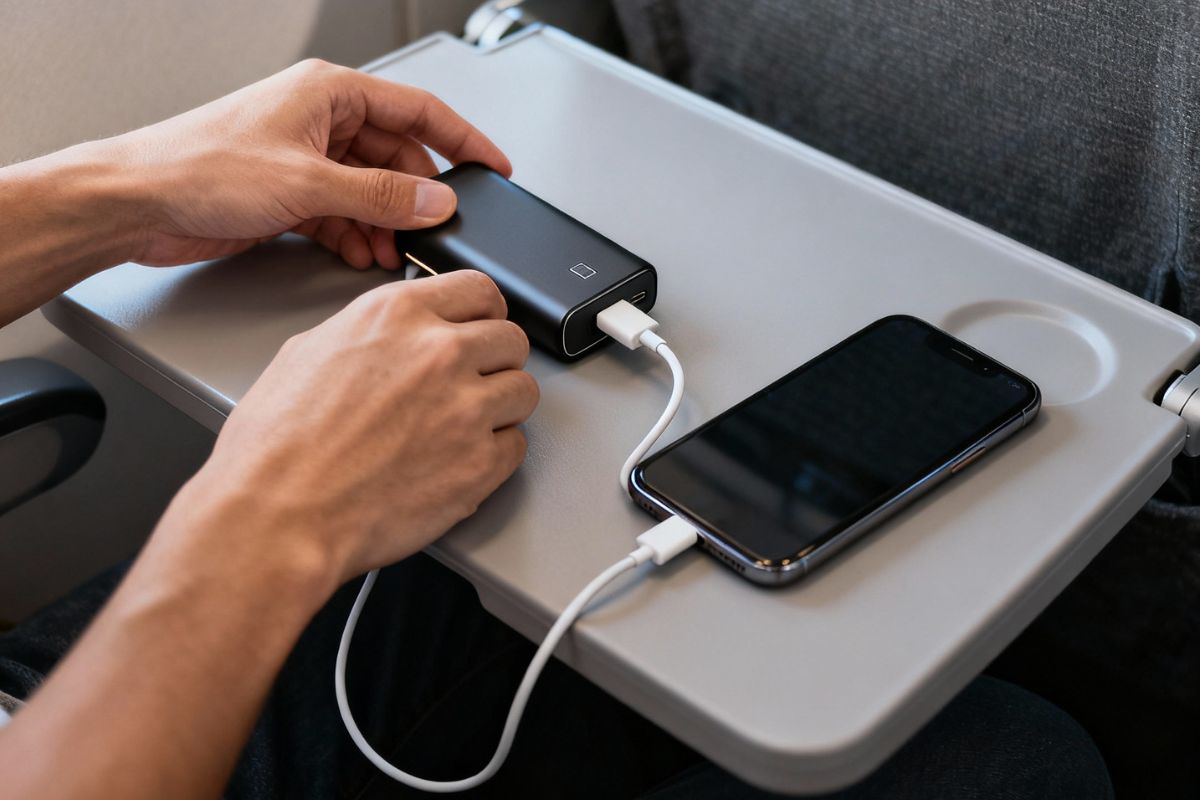India’s air safety regulator is all set to tighten the rules around carrying power banks on flights after a string of onboard fire incidents involving lithium batteries. The Directorate General of Civil Aviation (DGCA) has begun reviewing airline safety practices worldwide and is preparing new rules, which are expected to be rolled out soon.
DGCA Reviews Global Best Practices
The Directorate General of Civil Aviation (DGCA) is studying international aviation standards and technical reports before issuing updated guidelines aimed at improving passenger safety.
Recent battery-related incidents have pushed the aviation regulator to act. A few notable cases include:
- Delhi Airport: A passenger’s power bank caught fire on an IndiGo aircraft while it was taxiing.
- Dimapur Flight: Smoke was reported from a power bank onboard another IndiGo service.
- Air China Incident: A flight was diverted after a lithium battery malfunction caused smoke in the cabin.
These events have highlighted the growing safety risk of lithium-ion batteries inside aircraft cabins.
What Other Airlines Have Done
Several airlines globally have already banned or strictly limited the use of power banks in-flight due to similar risks. Emirates Airlines has prohibited passengers from using or charging power banks since October 1, 2025, allowing only one unit under 100 watt-hours (Wh), which must remain turned off and stored under the seat or in a seat pocket, not in overhead bins.
Singapore Airlines, Scoot, EVA Air, Thai Airways, and AirAsia have implemented comparable restrictions, limiting passengers to carrying one or two small-capacity units in cabin baggage while banning their use or charging during flights.
| Airline | Power Bank Policy |
|---|---|
| Emirates | Charging or using power banks is banned. Only one unit under 100Wh is allowed, and it must remain switched off. |
| Singapore Airlines | Passengers can carry power banks under 100Wh but cannot use them during flight. They must be stored under seats or in seat pockets. |
| Qatar Airways | Allows power banks in cabin baggage only; use during flight is strictly prohibited. |
| Etihad Airways | Bans use or charging of power banks in flight; must be switched off and safely stored. |
| Cathay Pacific | Power banks must remain off and cannot be charged onboard. |
| Turkish Airlines | Permits carrying power banks in hand luggage but not in checked bags; in-flight use is banned. |
What to Expect from India’s New Rules
In India, power banks are already restricted to hand luggage, but the DGCA may go further. Officials say upcoming rules could:
- Limit how many power banks each passenger can carry.
- Require visible capacity labels on all units.
- Specify where passengers must store them during flight.
- Possibly ban using or charging them onboard.
The goal is to balance practicality with safety, especially as travelers increasingly rely on personal electronics during trips.
Why Power Banks Pose a Risk
Most power banks use lithium-ion batteries, which can overheat through a process called thermal runaway. This occurs when a battery cell fails, releasing heat uncontrollably and sometimes causing smoke or fire. Because aircraft cabins are enclosed spaces, even a small malfunction can pose serious risks.
What Passengers Should Know
Until the new guidelines take effect, travelers should follow existing DGCA rules:
- Carry power banks only in cabin baggage.
- Avoid packing them in checked luggage.
- Keep them in good condition with visible capacity labels.
- Seek airline approval for units above 100Wh, and note that anything over 160Wh is not allowed.
Final Thought
The DGCA’s upcoming advisory will likely set clearer, stricter rules to make carrying power banks on flights safer for everyone. Travelers should expect updated instructions soon and plan accordingly before flying.
Follow and connect with us on Facebook, Twitter, LinkedIn, Instagram and Google News for the latest travel news and updates!
